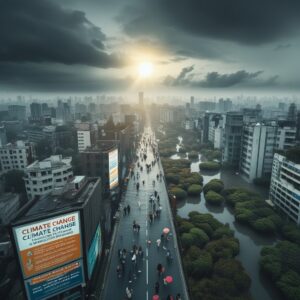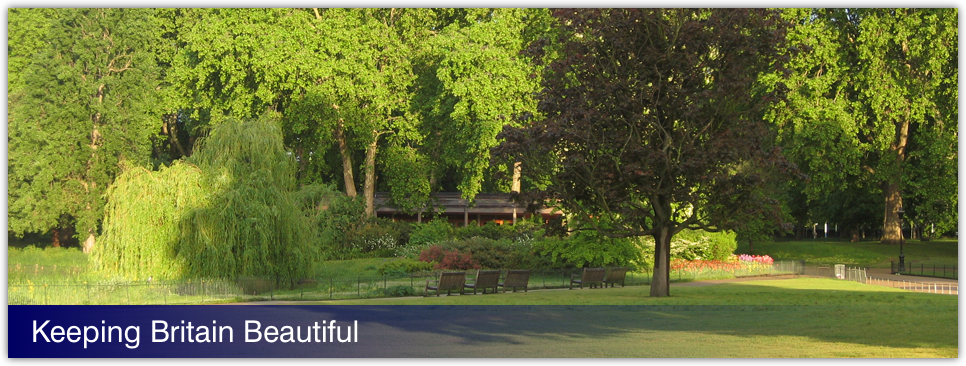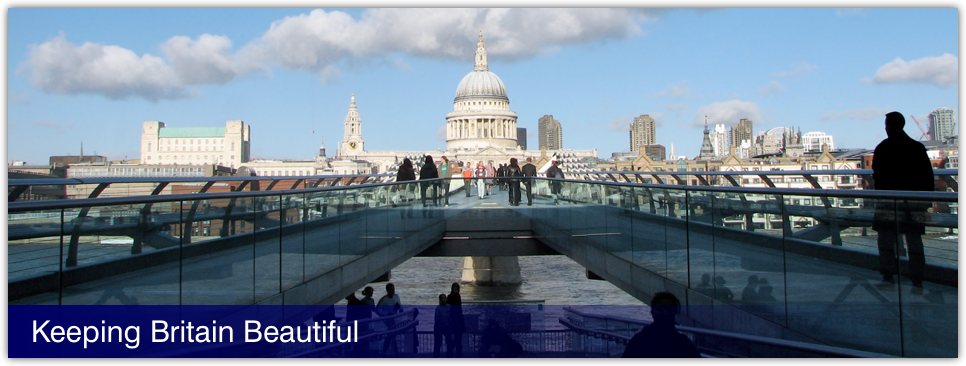Cities get hotter than surrounding rural areas, a phenomenon known as the urban heat island effect. With climate change added to the equation, nights stay warmer, heat waves last longer, and that mix of pavement, glass, and traffic traps more heat than is comfortable. It’s a matter of life and death for residents – with the rising of hotter days, there will be more heat exhaustion, dehydration, and heart and lung problems. The strain shows up in lost sleep, reduced work effectiveness, and a weariness that follows the city into the night.
Wealthy neighborhoods tend to have more shade, cooler roofs, and more green space, while densely built, low-income areas may lack sufficient trees or breezeways. Outdoor workers suffer higher risks, as do the elderly and people with chronic illnesses. Heat waves intensify air pollution – ozone is more easily created in hot, sunny conditions, which can worsen asthma and other respiratory problems. Сlimate-driven heat changes daily routines, health outcomes, and even how people choose where to live and work in a city.
Relief of a tangible kind is offered by smart design and community action. Planting additional trees, expanding parks, and creating shade structures can rapidly cool neighborhoods. Cool roofs, light-colored pavements, and reflective surfaces redirect heat and lower surface temperatures. Buildings can be rethought with improved insulation, efficient cooling systems, and intelligent controls that adjust to outdoor conditions. Local officials can do a lot of big things: set up heat-health alert systems, open cooling centers during peak times, and ensure that transit and important services remain accessible during heat surges. But little things matter big times: a cooler block, a shorter trip to a shaded park, or less crowded bus stop during a heat wave, for example, can make daily life better across a city.
In hot, dry cities, rain harvesting and careful irrigation reduce urban water demand and thus release supplies for homes and critical services when heat waves hit. Green corridors and pocket parks serve as climate buffer and social space, offering relief from the heat while supporting local biodiversity. When people see concrete steps taken—trees planted along a boulevard, a shaded plaza opened for community use, a building retrofitted with better insulation—they feel the impact in their lungs, their comfort, and their sense of control in an uncertain kind of weather.
Flooding, Sea Level Rise, and Coastal Cities
 Rising water levels and more intense rainfall events are redrawing risk boundaries in many places. Coastal cities grapple with increased flood risk from storm surge, tidal flooding, and overloaded drainage systems, while inland urban areas come under strain when heavy downpours overwhelm rivers and sewer networks. In megacities and mid-sized towns alike, flood exposure commands the center stage in planning conversations. Property damage, business interruption, and displacement increase with heavier rains and extended surges, particularly in low-lying districts, industrial zones along waterfronts, and neighborhoods served by aging infrastructure.
Rising water levels and more intense rainfall events are redrawing risk boundaries in many places. Coastal cities grapple with increased flood risk from storm surge, tidal flooding, and overloaded drainage systems, while inland urban areas come under strain when heavy downpours overwhelm rivers and sewer networks. In megacities and mid-sized towns alike, flood exposure commands the center stage in planning conversations. Property damage, business interruption, and displacement increase with heavier rains and extended surges, particularly in low-lying districts, industrial zones along waterfronts, and neighborhoods served by aging infrastructure.
For cities built on deltas or along coasts—places like some in Southeast Asia, the Americas, and Africa—the challenge grows: protect essential infrastructure while maintaining livable, affordable neighborhoods. Even global financial hubs are under no illusion—the flood risk is present in insurance costs, investment decisions, and long-term development feasibility. The responses aren’t universally applicable, either. Some locations lean on protective walls and seawalls, some on raised buildings and targeted elevation of critical facilities. Many integrate natural buffers—wetlands, mangroves, restored flood plains—with engineered systems to lessen harm.
Practical measures on the ground include improving drainage networks to handle heavier rainfall, designing roads as multimodal channels capable of carrying flood waters, and expanding green infrastructure such as bioswales and porous surfaces. Restoring wetlands and mangroves near coastlines does not merely limit flood risks but provides habitats and stores carbon. Zoning and land-use decisions matter: controlling new construction in flooding zones, elevating homes and shops, and creating flexible spaces usable in storms. Communities should have clear evacuation plans and early-warning systems, as well as accessible shelters, particularly for people with mobility or language hurdles.
In many places, flood water from the city’s rivers and coastal outlets is routed away. But concentration and heavy rain raise the drainage system to breaking point. Drought regions have a converse problem: supply limits and stressed aquifers strain regular water usage. Flood protection has to be weighed against water quality and ecosystem health—this necessitates the coordinated input of utilities, planners, and residents. That coordination is translated into practical steps: enhanced stormwater capture, efficient appliance incentives, and infrastructure protecting homes without erasing local character.
Water Security and Drought in Growing Urban Areas
Urban watersystems are structured to meet predictable demands, but climate shifts push demand and supply out of balance. Heavy rains and floods can make sources unsafe and overwhelm plants, while dry periods force cities to ration supplies, raise prices, and rethink water’s provenance. In fast-growing cities, added is the pressure that infrastructure be scaled up quickly to keep pace with population increase. When water is scarce, even routine tasks like drinking, bathing, and washing turn into planning exercises.
Cape Town’s 2018 Day Zero episode remains a stark lesson on how close a city might come to running out of resources. That scare drove curbs on water use, innovative conservation campaigns, and fast investments in alternative sources such as groundwater and desalination. Other cities—such as those in the Middle East, parts of California, and areas of Australia—are learning similar lessons: diversify supply, seal leaks, encourage water-saving technology, and get the message across that every drop saved counts. The objective is to fortify resilience such that a future dry spell can no longer threaten essential services.
There is a ceiling to efficient water usage where the deflation of demand is removed as a factor of growth. Water-wise building codes, soil moisture-aware landscaping, and brownfield retrofits conserve moisture and contribute to the city’s bottom line. Pricing signals, targeted public subsidies, and supportive permitting processes help households upgrade fixtures, appliances, and infrastructure without overwhelming budgets. When residents and officials work together—sharing data, watching use, and adjusting plans in real time—a city is more resilient to seasonal swings and longer-term trends.
The Infrastructure, Mobility, and Economic Impacts
The backbone of urban life, the roads, power supplies, transit, and supply chains, face further climate shocks. Powerful heat can stress electrical grids to the point of causing outages just as air conditioning demand peaks. Intense rainfall and flooding can wash out transport routes, interrupt deliveries, and damage essential facilities such as water treatment plants and hospitals. All this leads to higher maintenance costs, longer times to recover from events, and greater financial risk for both public budgets and private businesses.
When extremes of heat and rain roll into a city, people change how they move around. Bus and rail services tend to be cut back during bad weather, and roads soften under floodwaters or bow under heat. A city that plans for such realities invests in transit hubs, supports elevated stretches of road, and puts in water-friendly drainage to keep its streets usable. Electric vehicles add another layer- charging infrastructure has to be reliable even in storms, and power systems bear heavy spikes in energy demand during heat waves.
Climate pressures enter the economic arena through insurance costs, land values, and the viability of specific neighborhoods. Properties facing flooding are subject to higher premiums—and sometimes outright gaps in cover—thereby discouraging development in coastal zones without well-designed inducements. Businesses face elevated costs through the disruption of operations, and supply chains tighten when a single severe event closes a vital route. Meanwhile, climate-smart investments create new jobs and open routes to a cleaner, healthier urban economy: green roofs, permeable pavements, floodable parks, and energy-resilient systems.
Social Equity, Housing, and Policy for Adaptation
The impacts of climate change most severely affect those who are already disadvantaged. Low-income neighborhoods suffer disproportionate exposure to heat, flood risk, and polluted air while lacking equal opportunities to protect themselves through better housing or the means to adapt. Housing insecurity can increase in crisis circumstances due to utility rate and rent hikes following shortages or perceived risks. This isn’t only a technical problem, but a human one. Equity must be at the heart of climate action for cities to defend their vulnerable residents and keep neighborhoods together.
Policy frameworks go a significant way. Effective adaptation sets out ambitious targets with steps achievable today by local communities. This means involving residents in planning, ensuring that funded projects and programs address both renters’ and owners’ needs, and bringing housing policy into line with climate goals. Also, making information accessible: maps of flood risk, plans of tree planting that provides shade, climate dashboards that local people can understand. Public trust builds when communities can see real improvement, not paper plans.
The best adaptation eats fundamentals: improved air quality through cooler streets, better housing, and stronger community ties. Installing energy-efficient appliances provides a wide range of primary benefits. Tree planting in underserved neighborhoods, durability additions like flood-proof upgrades to public buildings, and co-benefit-delivering programs achieve more. When local governments partner with community groups, schools, and associate businesses, resiliency becomes not a set of isolated interventions but a shared project between them all.
Social Equity, Housing, and Policy for Adaptation
Low-income neighborhoods suffer disproportionate exposure to heat, flood risk, and polluted air while lacking equal opportunities to protect themselves through better housing or the means to adapt. Housing insecurity can increase in crisis circumstances due to utility rate and rent hikes following shortages or perceived risks. Equity must be at the heart of climate action for cities to defend their vulnerable residents and keep neighborhoods together.
Effective adaptation sets out ambitious targets with steps achievable today by local communities. This means involving residents in planning, ensuring that funded projects and programs address both renters’ and owners’ needs, and bringing housing policy into line with climate goals. Making information accessible: maps of flood risk, plans of tree planting that provide shade, and climate dashboards that local people can understand. Public trust builds when communities can see real improvement, not paper plans.
The best adaptation eats fundamentals- improved air quality through cooler streets, better housing, and stronger community ties. Installing energy-efficient appliances provides a wide range of primary benefits. Tree planting in underserved neighborhoods, durability additions like flood-proof upgrades to public buildings, and co-benefit-delivering programs achieve more. When local governments partner with community groups, schools, and associate businesses, resiliency becomes not a set of isolated interventions but a shared project between them all.



